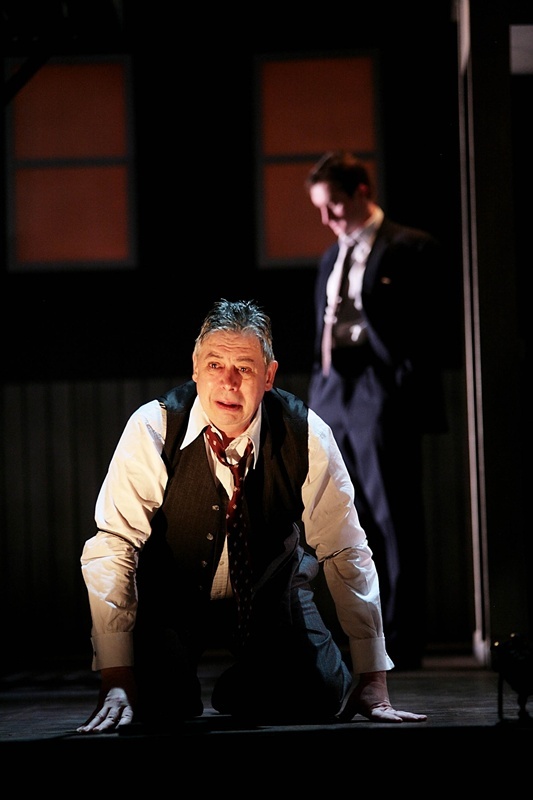Described as one of the finest dramas in the whole range of American theatre, and widely studied in schools and universities, Arthur Miller’s classic play Death Of A Salesman is no walk in the park for any director or actor.
There are so many things that can go wrong with a work that requires its cast to have spot-on Brooklyn accents and be capable of conveying high drama, moments of silent contemplation, flashbacks and the truly devastating effects of mental illness.
Happily, Perth Theatre’s production, directed by Ian Grieve, achieves all of this and is invested with energy, sincerity and passion from the outset.
Ron Emslie gives a powerful and convincing performance in the lead role of Willy Loman, his booming voice filling the auditorium as we see a man coming to the end of the road, both physically and metaphorically.
Emslie jumps admirably between Willy’s happier times — his surer days, when even the occasional lie crept in here and there — and his despair, to the point at which he can no longer sustain his burden; a broke and broken man.
Vari Sylvester gives a strong portrayal of Willy’s doting wife Linda, his “foundation” and “support”. She embodies the tired and fraught woman who is putting on a brave face for her family as her husband’s worrying behaviour continues to deteriorate.
The actors playing the Loman boys carry off equally pleasing performances. Ewan Donald does great justice to Biff’s conflicted emotions, as we see his feelings toward Willy turn hot and cold, swinging like a pendulum between pity and hatred.
Robert Jack, playing Happy Loman, gives a commendable interpretation of the brother most like Willy, a womanising department store worker who claims to be doing all right for himself. Yet, beneath the pretence, he is almost as delusional as his father.
The detailed use of costume and props adds to the authenticity of the play, including the family’s pride-and-joy refrigerator, which Willy kicks when it breaks, exclaiming he’d at least like to own something outright before it ceases to work.
The switches between the present Loman boys in their 30s and the high school students of the past are achieved with a plausible change of clothes and manner as well as the use of an American football, which the pair pass back and forth in their youthful excitement.
The scenes from Willy’s mind are realised without confusion and his brother Ben, played by Perth Theatre stalwart Terry Wale, is ice-cool in a white suit, as sharp and bright as the diamonds that made him rich. Despite being an apparition, he is the one who ultimately succeeds in placing doubts in Willy’s already-volatile psyche.
Even through the intensity and sadness, there is still humour — and relevant at that. When Charley (Richard Addison) tells Willy business is not about being well-liked, he asks him, “who liked J. P. Morgan?”
The set, designed by Ken Harrison, isn’t as claustrophobic as it might have been, but acts as a superb backdrop for the story, allowing the often complex scenes to be played out seamlessly.
An imaginative use of lighting adds to the overall setting, with clever use of silhouette and even the suggestion that people are being rudely awakened when Willy starts yelling in the back yard at an ungodly hour.
Musician Steve Kettley, who also doubles as bartender Stanley, appears from time to time on the dimly-lit fire escape to play woodwind instruments. This lends to the slinky, jazz-age atmosphere, but can drown out the dialogue a little.
One of the greatest questions raised by Death Of A Salesman is whether we should pity Willy Loman. Emslie presents us with a likeable but ultimately desperate man whose life has apparently been ruled by hyperbole.
He is almost a fallen angel — Linda calls him a “lonely little boat looking for a harbour”, just another victim who has been chewed up and spat out by a cruel and progressive consumer society.
Unsurprisingly, it was Emslie who received the loudest cheer of the night — and it was well deserved.Death Of A Salesman runs until February 26 at Perth Theatre. Visit www.horsecross.co.uk for more information.
